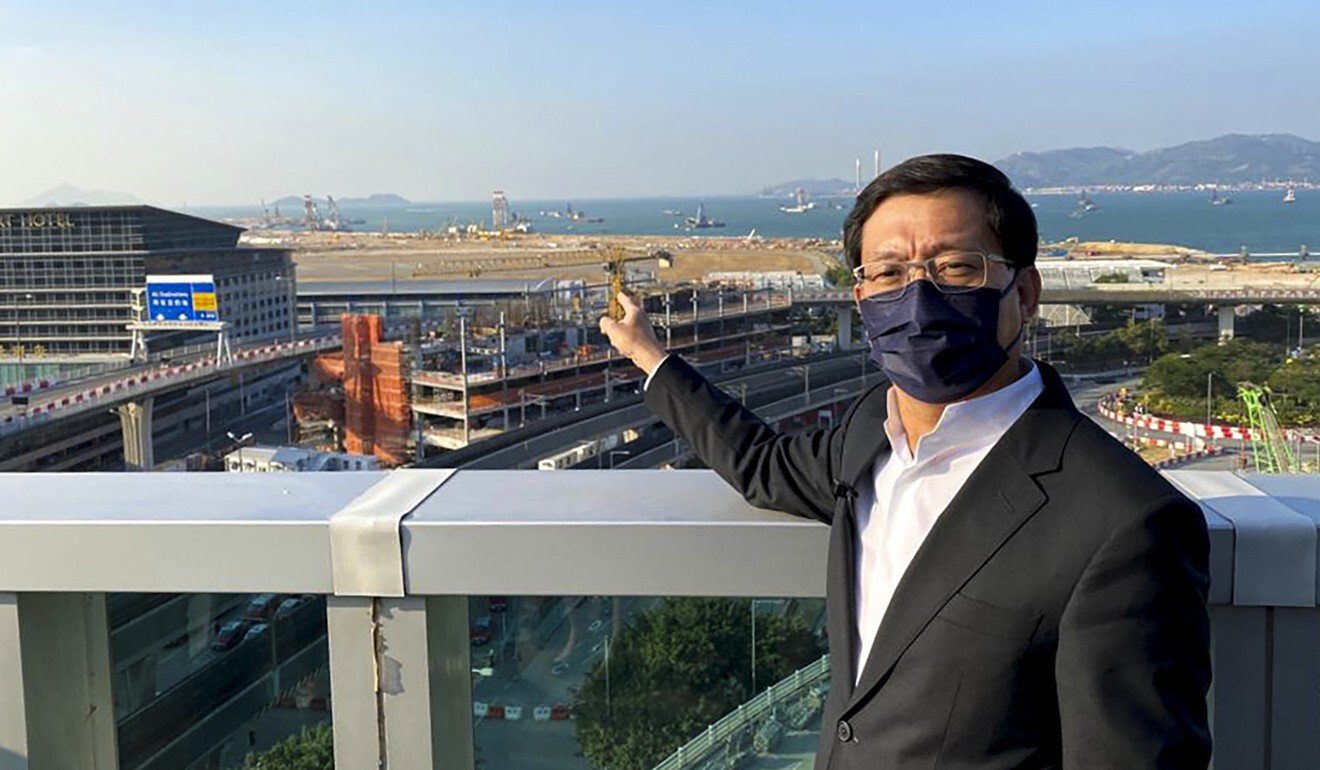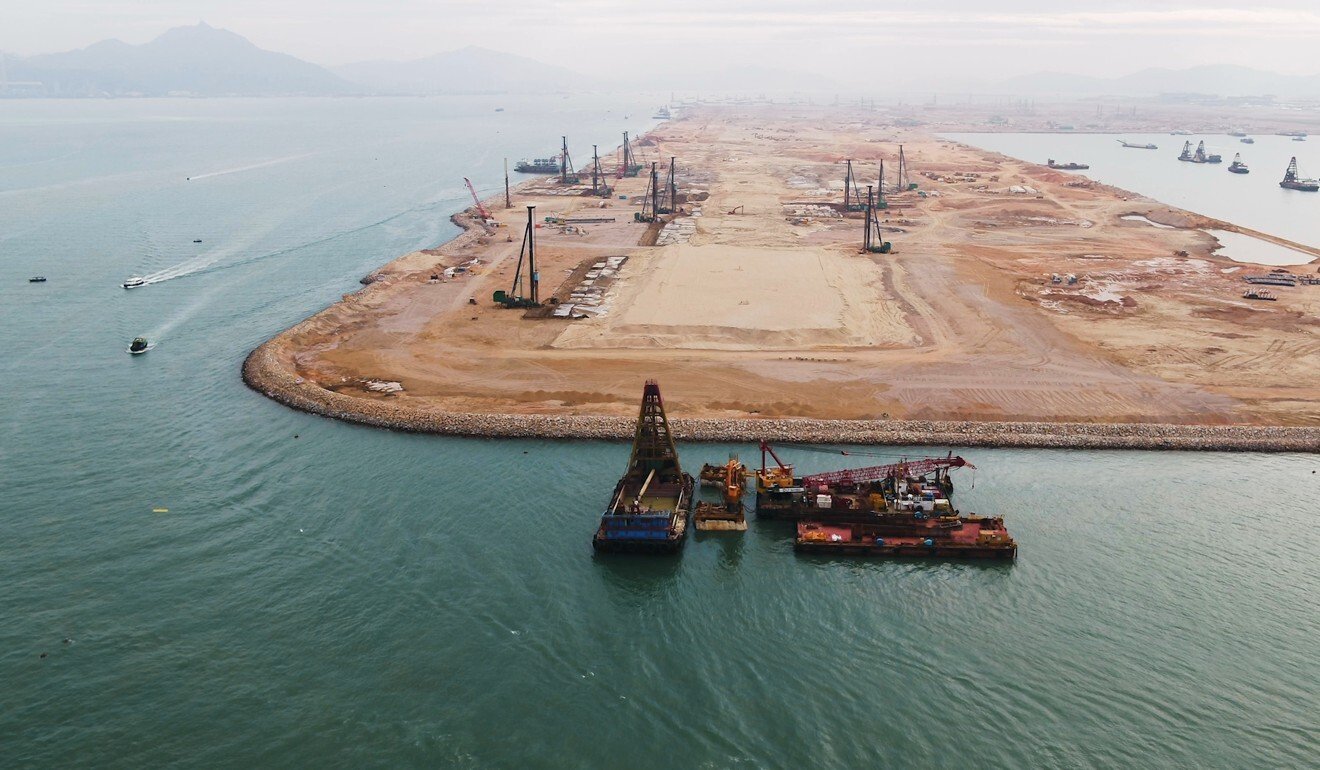
Hong Kong seeks bigger stake in Zhuhai airport to ensure it has say in its future development, officials say
- Negotiations to increase 55 per cent stake will start soon, Airport Authority Hong Kong says
- Authority unveils details of HK$40 billion worth of strategic initiatives and developments as it bids to turn HKIA into an ‘airport city’
Hong Kong is seeking a bigger stake in neighbouring Zhuhai airport to ensure it has a say in its future development, according to the Airport Authority (AAHK), which hopes to capture the region’s air passengers and cargo potential in the long run.
Negotiations to increase AAHK’s 55 per cent stake in mainland China’s 35th largest airport would start soon, but it did not want complete control, said authority officials, who detailed their investment and development plans at a closed-door briefing on Thursday.

She outlined greater cooperation between the two airports in a bid to build a “world-class aviation cluster” in the region by leveraging China’s domestic flight network with the international reach of Hong Kong.
The authority provided details of HK$40 billion worth of strategic initiatives and plans on Thursday, as it bids to turn HKIA into an “airport city” that incorporates passenger and air cargo services with cross-border transport, and commercial developments including retail, entertainment, conventions and exhibitions. It is currently spending HK$144 billion on building a third runway.
AAHK said the Zhuhai plan was not just to complement each other on existing flight networks, but also to potentially fly to 160 mainland airports which had no international border facilities, and more than 130 others under construction.
Zhuhai airport had more underutilised potential, Fred Lam said, so it provided more room for both airports to grow and cooperate. “This is not a financial investment per se, we hope the two cities can benefit from each other,” Lam added.
The authority has managed Zhuhai airport since 2006 in a joint venture with the local government – spending 198 million yuan for the stake – and during its tenure, passenger numbers have risen from 800,000 to 12 million last year, connecting to 80 mainland routes but no international destinations.
Hong Kong airport also sees potential to expand its air cargo presence and physical reach into the mainland through Zhuhai and at a new HKIA Logistics Park in Dongguan.
At the moment, Hong Kong only handles 28 per cent of China’s international cargo outside Guangdong, as well as 75 per cent of all international air freight in the Greater Bay Area.
Lam said Zhuhai was a better option to handle air cargo rather than Shenzhen or Guangzhou airports because of the good connection provided by the mega Hong Kong-Zhuhai-Macau Bridge, which would help lower the cost of transporting low-value goods.

From next year, cargo operators from Dongguan could also choose to use an airside intermodal cargo handling facility, located near the third runway reclamation area, and re-export the goods to other countries without the need to enter Hong Kong, helping to lower transport costs by half and shortening the time by one-third, AAHK chiefs said.
The measure, in addition to a new premium logistics centre to be completed by 2023, will add an extra 1.7 million tonnes of cargo volume to the airport each year.

Law Cheung-kwok, senior adviser at the aviation policy and research centre at Chinese University, said Guangzhou and Shenzhen would further expand as international hubs, add more long-haul flights and international connections for mainland travellers, requiring a response.
“Hong Kong needs to sustain our competitiveness by every means, so by doing all this, I can’t say to what extent we will be successful but those are the possible ways to enhance itself as the leading international hub in the region. No doubt the competition will be severe and steep,” Law said.
Last year, HKIA handled 71.5 million passengers and 4.8 million tonnes of air freight. The authority’s vision is to handle 120 million passengers and 10 million tonnes of cargo by 2035, however, these numbers were laid out before the coronavirus pandemic struck.

Separately, officials detailed efforts to build a driverless vehicle network – first to connect the airport with a border-crossing facility by 2022 and then to the nearby Tung Chung town centre by 2028. According to an AAHK video, the system is similar to driverless “pods” that have operated at London’s Heathrow airport since 2011. But the development hinges on a new transport law allowing driverless vehicles to operate.
The system would cover 3.8km once the Tung Chung network was built and be able to handle 5,000 passengers per hour, carrying 20 per vehicle, compared to four at Heathrow.
The authority also revealed the design of the second phase of AsiaWorld-Expo, which will increase exhibition space to 100,000 square metres, the largest in Hong Kong, and hold a maximum audience of 20,000 for an indoor performance.
“That’s why we need a driverless system to better manage the traffic inside and outside the airport area, as future developments will increase the flow of people,” Lam said.


